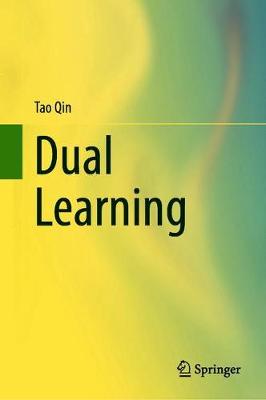Many AI (and machine learning) tasks present in dual forms, e.g., English-to-French translation vs. French-to-English translation, speech recognition vs. speech synthesis, question answering vs. question generation, and image classification vs. image generation. Dual learning is a new learning framework that leverages the primal-dual structure of AI tasks to obtain effective feedback or regularization signals in order to enhance the learning/inference process. Since it was first introduced four years ago, the concept has attracted considerable attention in multiple fields, and been proven effective in numerous applications, such as machine translation, image-to-image translation, speech synthesis and recognition, (visual) question answering and generation, image captioning and generation, and code summarization and generation.
Offering a systematic and comprehensive overview of dual learning, this book enables interested researchers (both established and newcomers) and practitioners to gain a better understanding of the state of the art in the field. It also provides suggestions for further reading and tools to help readers advance the area.The book is divided into four parts. The first part introduces the algorithms based on the dual reconstruction principle using machine translation, image translation, and speech processing as the demo applications. It covers algorithms, such as dual semi-supervised learning, dual unsupervised learning and multi-agent dual learning. In the context of image translation, it introduces algorithms including CycleGAN, DualGAN, DiscoGAN cdGAN and more recent techniques/applications. The second part presents various work based on the probability principle, dual supervised learning and dual inference based on the joint-probability principle, and dual semi-supervised learning based on the marginal-probability principle. The third part reviews various theoretical studies on dual learning and discusses its connections to other learning paradigms. The fourth part provides a summary and suggests future research directions.
- ISBN13 9789811588839
- Publish Date 5 December 2020
- Publish Status Forthcoming
- Publish Country SG
- Imprint Springer Verlag, Singapore
- Edition 1st ed. 2020
- Format Hardcover
- Language English
